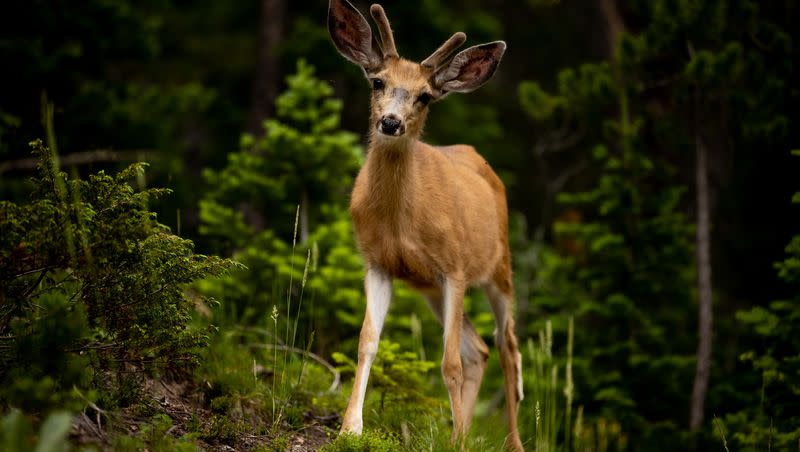‘Zombie deer disease’ is spreading. Scientists are worried it could infect humans

Chronic Wasting Disease, or CWD, also known as the “zombie deer disease” has been detected in multiple North American deer populations. Wyoming might house the largest number of infected animals with over 800 samples found in deer, elk and moose, per The Conversation.
According to the Centers for Disease Control and Prevention, CWD was first found in captive deer in Colorado in the late 1960s and in wild deer in 1981. Since then, it has spread to at least 31 states across the U.S., affecting all regions.
Even states without robust animal surveillance systems may have CWD cases that haven’t been detected. Once established, CWD can persist in the environment for a long time, and the affected areas are expected to grow further.
What happens to animals who are infected?
Per a review, published in Annual Reviews, CWD is a prion disease. Prions are abnormal proteins that can make healthy brain proteins misfold, causing neurological damage. This type of damage results in drooling, lethargy, weight loss, stumbling and vacant gazes.
It might be more than a year before an infected animal shows signs. Animals of any age can get CWD, and some may die from it without showing symptoms. Unfortunately, CWD is deadly for animals and there are no cures or vaccines available yet, according to the CDC.
Researchers think that CWD prions pass between animals through body fluids like poop, saliva, blood or pee. This can happen when animals touch each other directly or when they come into contact with contaminated soil, food or water. Once CWD gets into an area or farm, it can spread fast among deer and elk populations, per the CDC.
What are the potential human health risks?
Currently, there are no confirmed cases of CWD in humans. However, multiple prion diseases have spread between animals and humans. For example, “mad cow disease” resulted in the deaths of millions of cattle and 178 humans since 1995, according to The Conversation.
Furthermore, in a study published by JNeurosci, CWD was found to infect human cells under laboratory conditions.
Scientists currently believe that CWD would spread to people through eating infected deer populations, per the CDC.
Detecting and diagnosing prion diseases in humans, however, is challenging. Unlike typical infectious agents, prions don’t activate the immune system, making them hard to detect using standard methods. This makes it tough to intervene early and contain the diseases, according to The Conversation.
What are the ecological and economic risks?
The spread of CWD brings risks beyond health concerns. Deer hunting is not only a popular activity but also a vital source of food and income. CWD could disrupt this balance, harming deer populations and food security. CWD also affects ecosystems beyond deer. Deer shape how plants grow and change over time. If deer decline due to CWD, it could affect plants, soil and other wildlife that rely on deer for food or habitat, per The Conversation.
Is the zombie deer disease happening in other countries?
Besides infected North American areas, which include the U.S. and Canada, there are cases in Norway, Finland, Sweden and South Korea. CWD may also occur in other countries where there are minimal or weak animal surveillance systems, according to the CDC.
Is there anything we can do to prevent the spread of disease?
The CDC has recommended guidelines for hunters when hunting in areas with CWD.
Avoid shooting, handling or consuming meat from deer and elk that appear sick, behave strangely or are found dead.
When dressing a deer use latex or rubber globes, handle the organs as little as possible and avoid using household knives or kitchen utensils.
Check state wildlife and public health guidelines for testing recommendations.
Consider testing the deer or elk for CWD before consuming the meat
If commercially processing, request individual processing to avoid mixing meat from multiple animals.
If the animal tests positive for CWD, refrain from consuming its meat.
Though further research is needed, there are currently vaccines being developed going through clinical trials in Canada, according to a review published in Inder Science Online.

